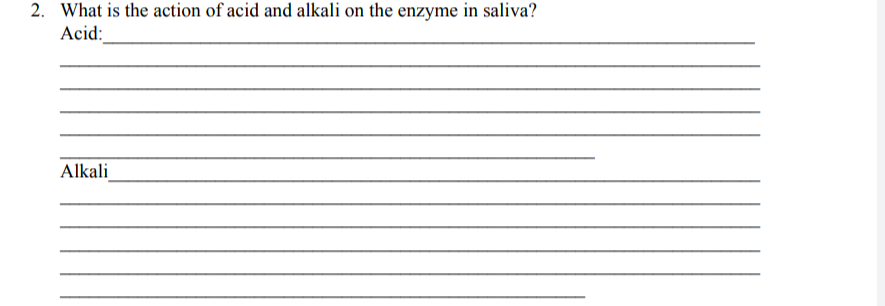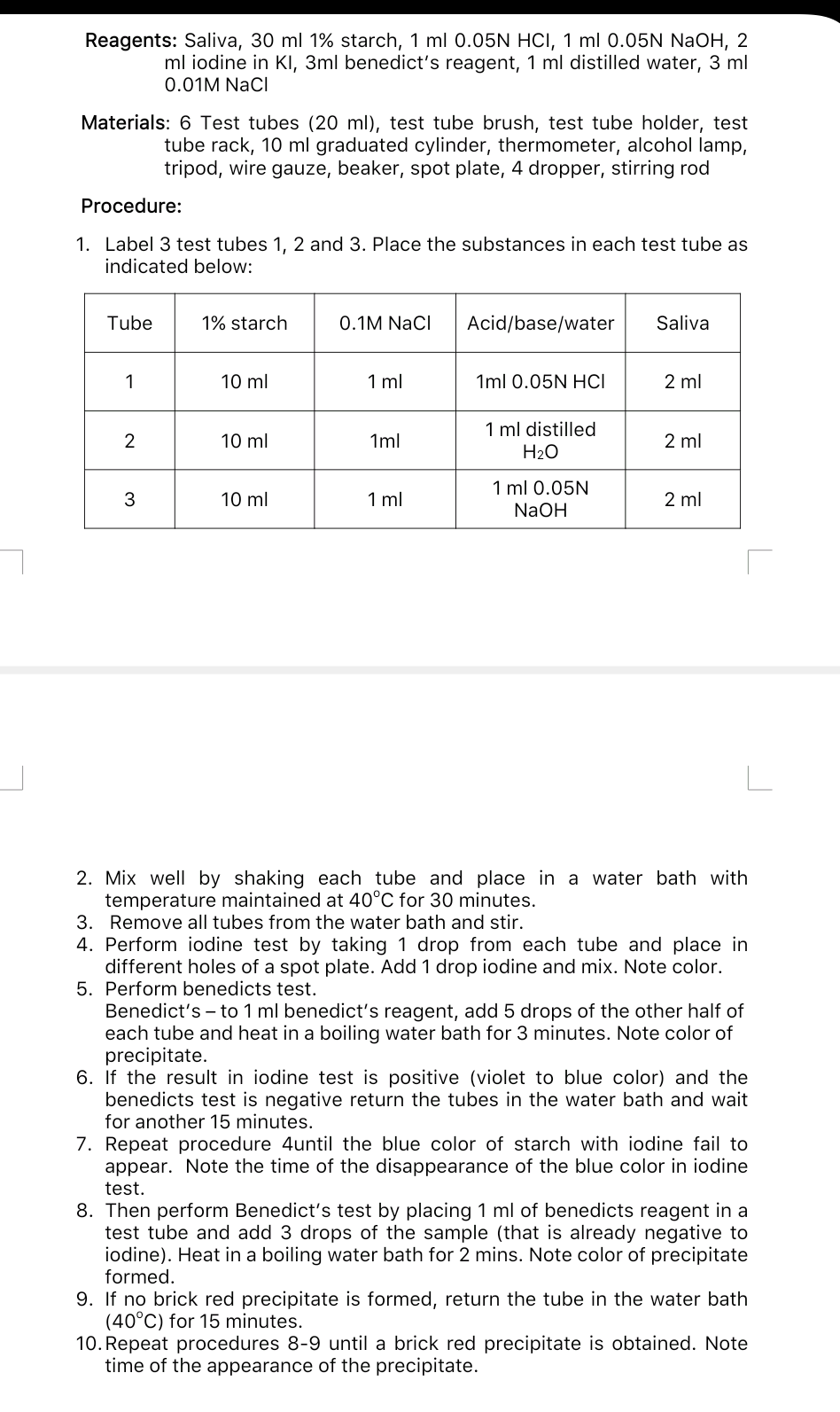Chapter10: Reconstitution Of Powdered Drugs
Section: Chapter Questions
Problem 41SST
Related questions
Question
Please help me answer the questioncorrectly procedure is already given as a guide thank you

Transcribed Image Text:2. What is the action of acid and alkali on the enzyme in saliva?
Acid:
Alkali

Transcribed Image Text:Reagents: Saliva, 30 ml 1% starch, 1 ml 0.05N HCI, 1 ml 0.05N NaOH, 2
ml iodine in KI, 3ml benedict's reagent, 1 ml distilled water, 3 ml
0.01M NaCI
Materials: 6 Test tubes (20 ml), test tube brush, test tube holder, test
tube rack, 10 ml graduated cylinder, thermometer, alcohol lamp,
tripod, wire gauze, beaker, spot plate, 4 dropper, stirring rod
Procedure:
1. Label 3 test tubes 1, 2 and 3. Place the substances in each test tube as
indicated below:
Tube
1% starch
0.1M NaCl
Acid/base/water
Saliva
1
10 ml
1 ml
1ml 0.05N HCI
2 ml
1 ml distilled
H2O
10 ml
1ml
2 ml
1 ml 0.05N
3
10 ml
1 ml
2 ml
NaOH
2. Mix well by shaking each tube and place in a water bath with
temperature maintained at 40°C for 30 minutes.
3. Remove all tubes from the water bath and stir.
4. Perform iodine test by taking 1 drop from each tube and place in
different holes of a spot plate. Add 1 drop iodine and mix. Note color.
5. Perform benedicts test.
Benedict's – to 1 ml benedict's reagent, add 5 drops of the other half of
each tube and heat in a boiling water bath for 3 minutes. Note color of
precipitate.
6. If the result in iodine test is positive (violet to blue color) and the
benedicts test is negative return the tubes in the water bath and wait
for another 15 minutes.
7. Repeat procedure 4until the blue color of starch with iodine fail to
appear. Note the time of the disappearance of the blue color in iodine
test.
8. Then perform Benedict's test by placing 1 ml of benedicts reagent in a
test tube and add 3 drops of the sample (that is already negative to
iodine). Heat in a boiling water bath for 2 mins. Note color of precipitate
formed.
9. If no brick red precipitate is formed, return the tube in the water bath
(40°C) for 15 minutes.
10. Repeat procedures 8-9 until a brick red precipitate is obtained. Note
time of the appearance of the precipitate.
Expert Solution
This question has been solved!
Explore an expertly crafted, step-by-step solution for a thorough understanding of key concepts.
Step by step
Solved in 2 steps

Recommended textbooks for you



